José Antonio, fifth generation in command of one of the geological treasures strangers from the interior of Cádiz, he rubs his fingers in a sign of money and, immediately afterwards, turns his hand downwards. “What does this mean? Money, right? But if we turn the gesture around, we do the same thing as when we put salt on food,” he says.
"There's the real meaning: salt was formerly the best food preservative That's why it was always so important." Our cicerone affirms this while, behind him, the mountains of the Sierra de Cádiz rise towards infinity, setting limits to the horizon.
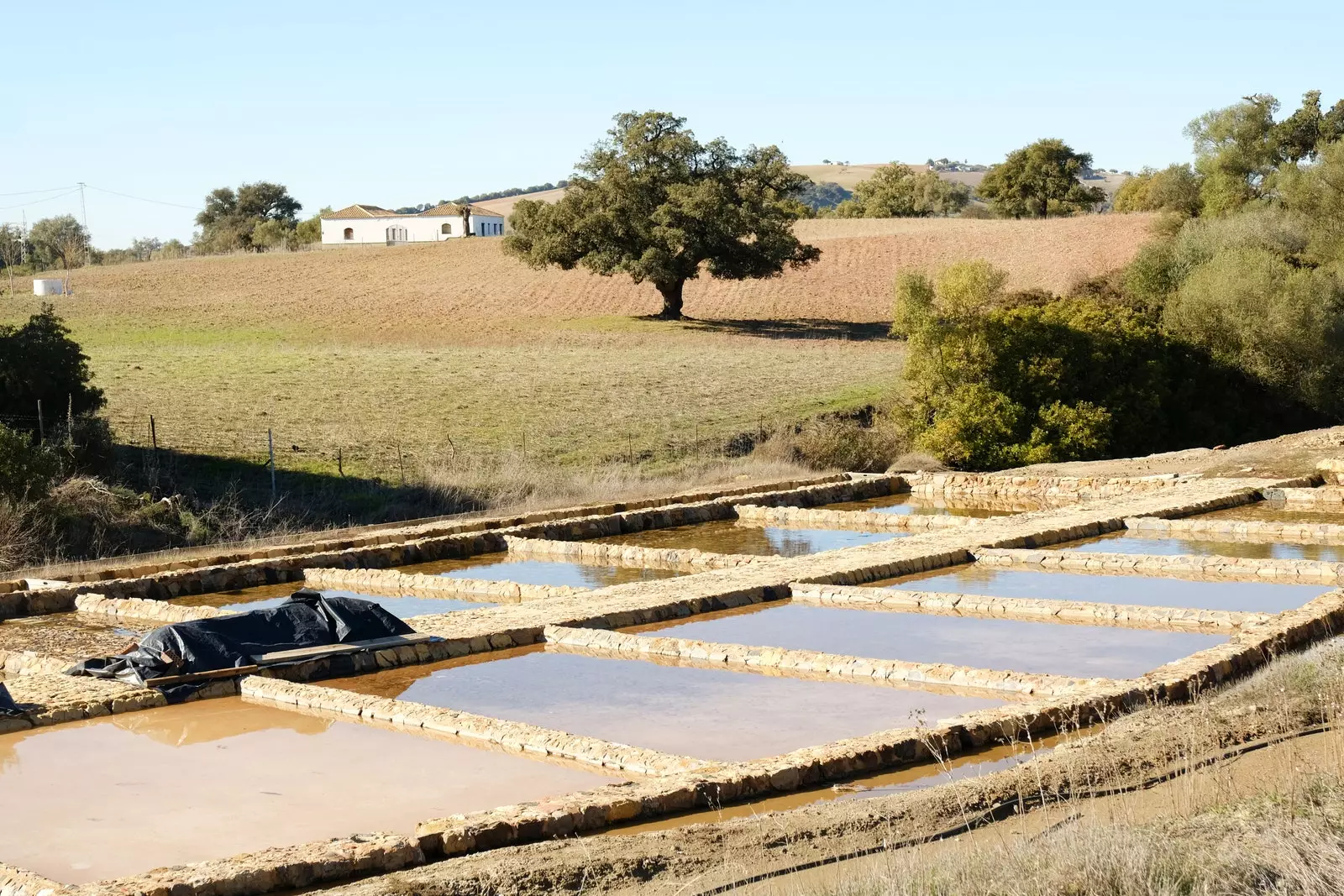
Salt was once the best food preservative.
We are at the origin of everything: at the birth of the salt flats that he, just like his uncle, his grandfather, his great-grandfather and, as a pioneer, his great-great-grandfather, managed on a farm next to the Cadiz town of King's Meadow , in the heart of Alcornocales Natural Park . Some salt pans, indeed, in the interior of Cádiz: the only ones still active in the province. And it is so due to a not so usual phenomenon that in this specific place occurs for various reasons.
On the one hand, because the area is located next to Grazalema, the point where it rains the most in Spain and which, due to its limestone soils, causes the water to drain throughout the land until it bubbles to the surface where it becomes clayey. , as it happens at this point.
On the other, because this geographical area that 250 million years ago it was found in the depths of the Tethys Sea , conserves large amounts of salt in its entrails. “At that time there were areas in which clusters of water were created, which over the course of millions of years solidified and became an immense rock of salt in the subsoil. This is what makes it so that, when the fresh water from the mountains passes through it, a salt water birth is created ”. Therein lies the key.
However, this miracle of nature was not discovered directly by the ancestors of José Antonio, of course not: already in the Bronze Age there was movement in the area , although it was the Phoenicians who expanded its structure for large-scale food preservation.
That was precisely the economic basis of the ancient Roman city of Iptucci , from the 2nd century, whose remains are found in the neighboring Cerro de Cabeza de Hortales . It became so important that it even minted its own currency. And much of the blame was, of course, the salt.
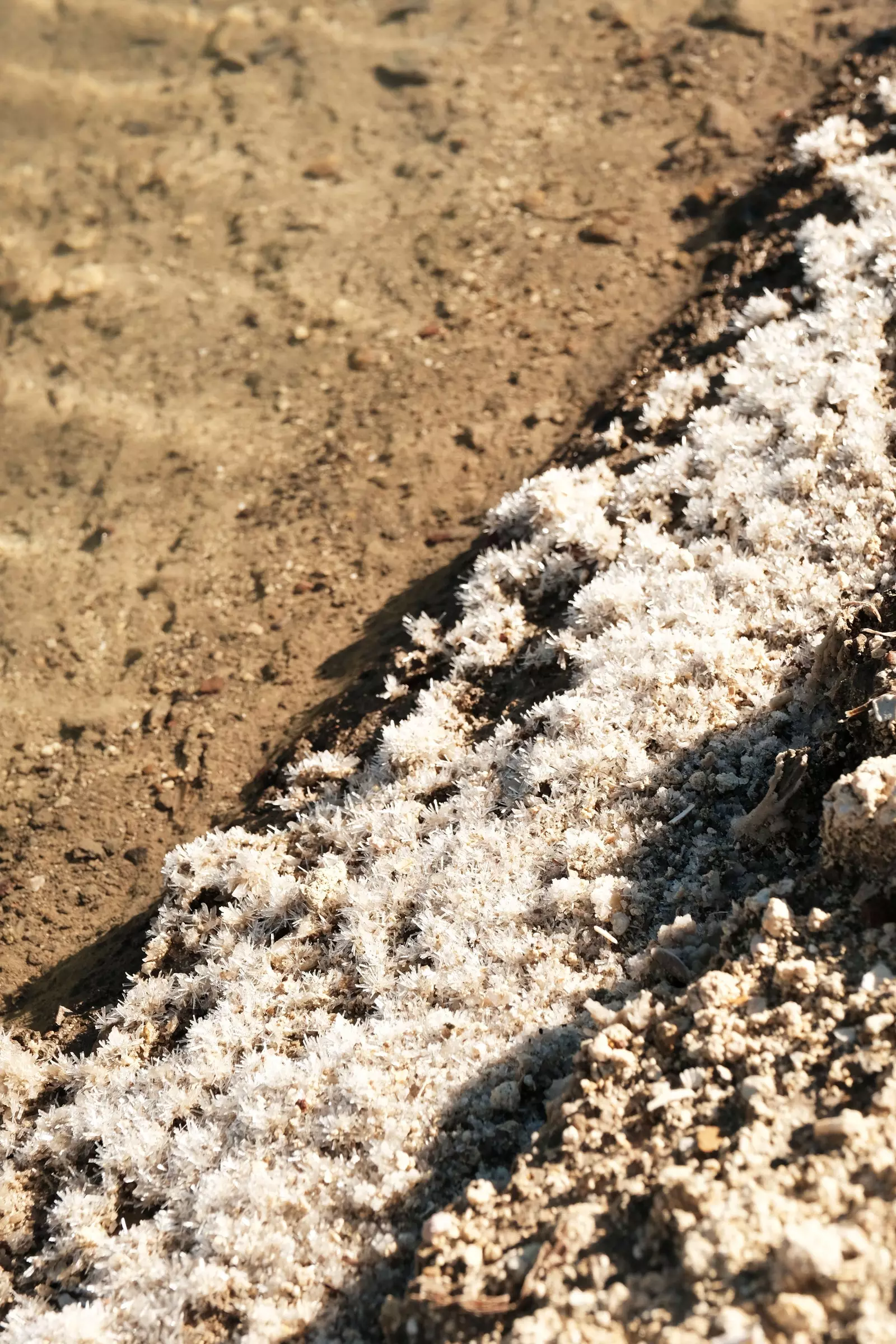
crystallized salt.
A PAST THAT IS PRESENT
To speak of Iptuci is to speak of a past steeped in history that can be identified when strolling among the different pools that make up the initial decanters, the heaters and the crystallizers of the salt flats: we are looking at exactly the same distribution that they already had almost twenty centuries ago.
José Antonio patiently narrates, and with a passion that is clearly reflected in his face, the step by step of how it is carried out salt extraction . An activity that continues to be carried out today in an absolutely traditional way.
“We are a company that works without machinery , the most modern machinery is a hand cheek that gives us all the back pain in the world”, he jokes as he leads us to a small wooden fence that surrounds the place from which the spring gushes at an almost imperceptible speed: approximately 200 milliliters per second. “The water comes out of here, by pressure and without any motor, and the only thing we play with is the unevenness of the terrain. If you look at this little stream, it's very red: that's because of the amount of iron it brings”, he adds.
Iron, which, as he continues explaining, is deposited by decantation in the next three pools of the circuit that makes up the salt flats. “The sensation that the water that you see gives is that it is stagnant, but it is because here everything has to go very slowly. If I had a lot of current, I wouldn't do that slop ”, comments the host.
A small wooden platform on one of the sides of the salt pans allows you to get a full view of the place. From there, and at the same time that he offers to take pictures of visitors who wish to do so with their mobile phones, José Antonio continues narrating his story: that of his family, that of the salt temple in which he has spent most of his life, that of what and for which he lives since, 16 years ago, he decided to put aside his other jobs and devote himself entirely to it. After all, it is about the business that is in his blood: in this same corner of Cádiz he was born and played since he was a child.
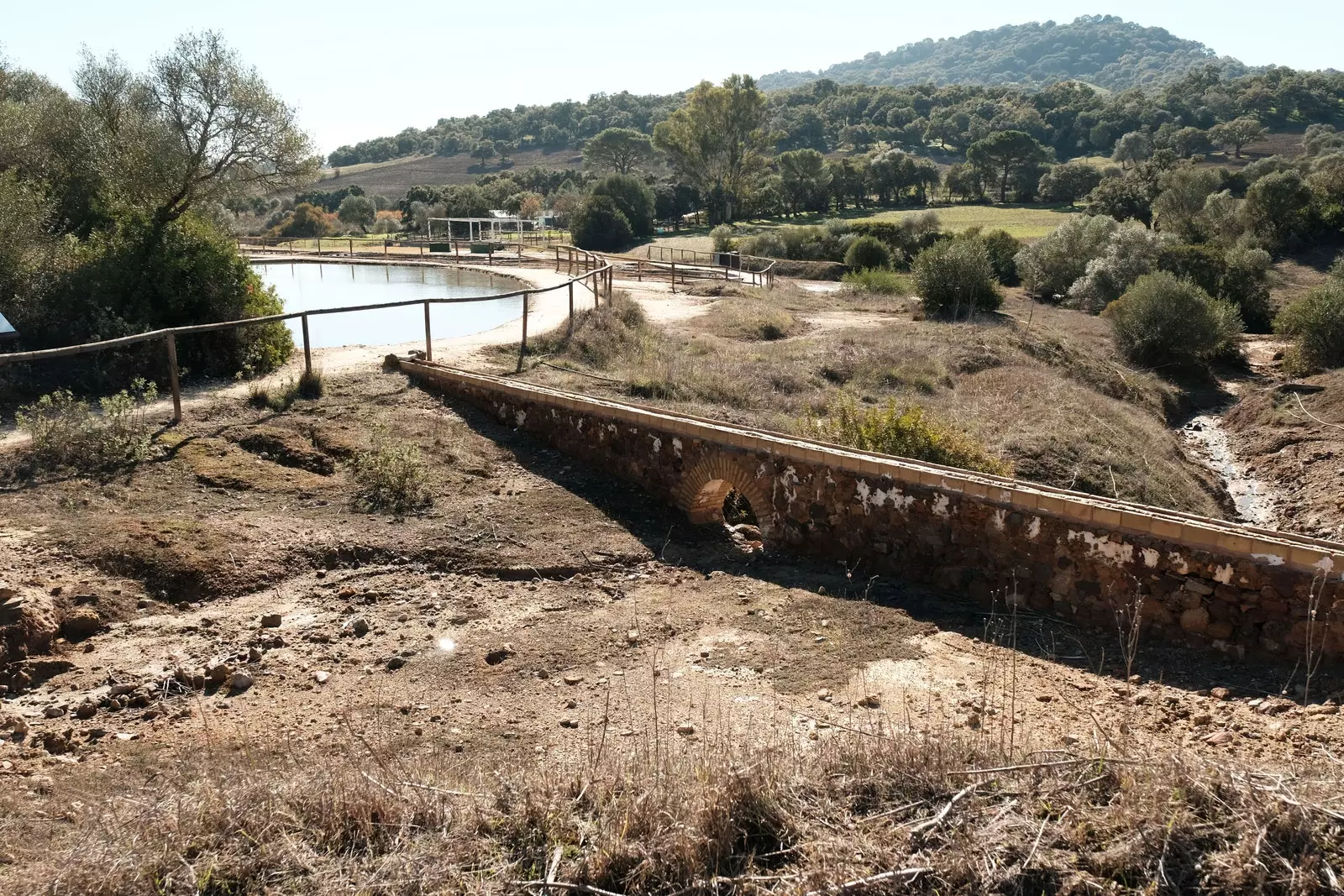
The surroundings of the Salinas.
“My great-great-grandfather was the one who bought this, because the royal canyon that went from Seville to Algeciras passed through here, and he decided to set up an inn in the middle of the road. It is the farm that you see next door, the same one where I live now with my family”, he affirms. “Then he began to host people and earn money. With what he earned, he bought the salt flats, and he set up both the first cheese factory in Prado del Rey and the first oil mill . But the salt flats were always the engine of everything.” He recalls José Antonio the life of the generations that preceded him, but also the childhood years in which he moved with his brothers through these same corners.
Meanwhile, the tour continues: it is the turn of the so-called "heaters", to which the water reaches through a small aqueduct. It is in them, and thanks to the sun that, in these parts, it feels very strong in summer, where the fresh water evaporates, reaching the maximum concentration of salinity, up to 48% . “The two channels through which the water continues to flow are called, in the area of the Bay of Cadiz , the laps of the parakeet, but we call it head because it is what the oldest people in town have always called it”.
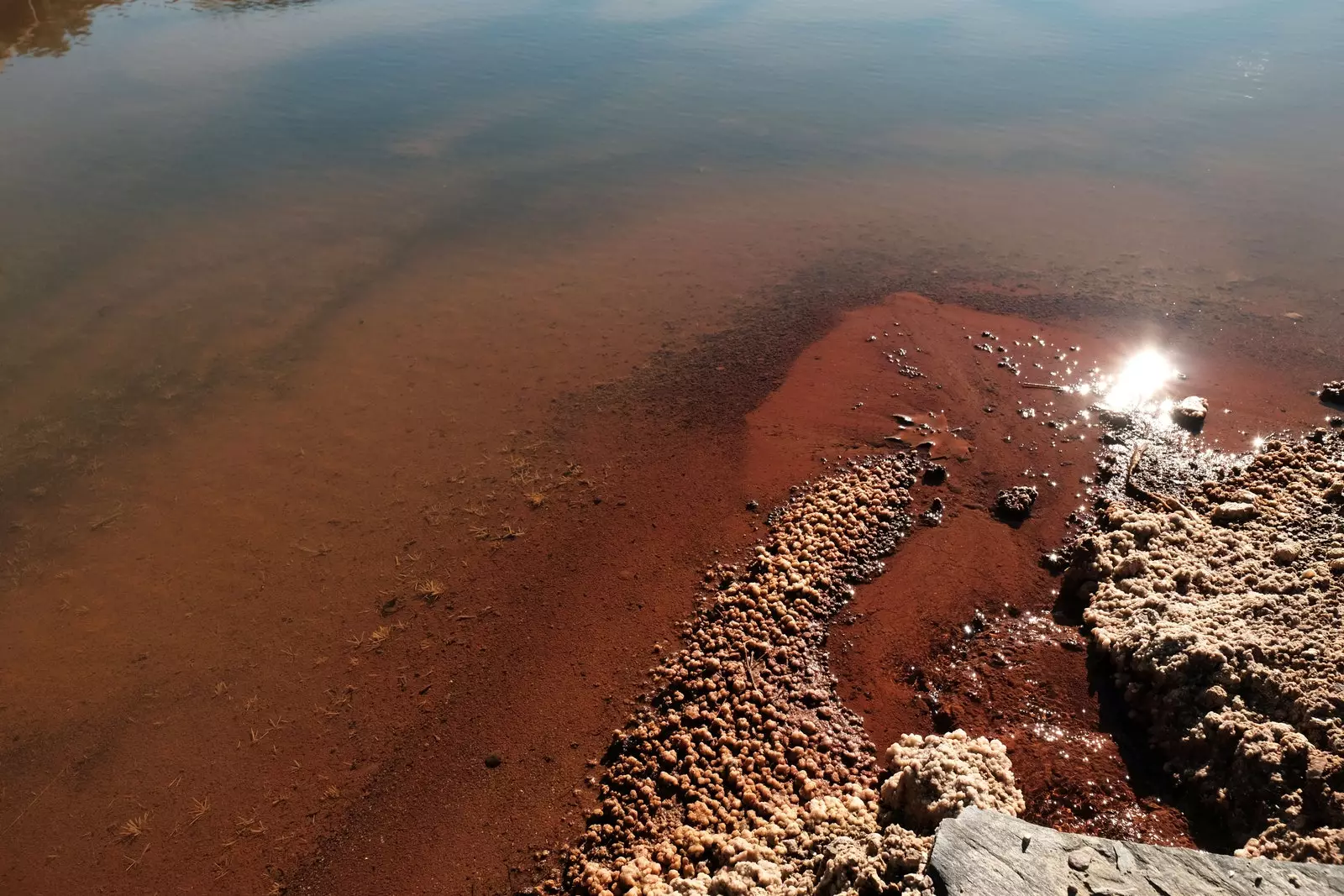
Iptuci salt flats.
Channels that carry the water to the last part of the process, the crystallisers or pools. It is in them that, only during the hottest summer months, the three types of salt that are marketed from Iptuci are finished being created: the flower of salt —ideal to accompany some fried eggs, says José Antonio—, the salt flakes —of such size and purity that they have become the star product of the salt mines— and virgin salt. Each of them with an extraction schedule, a type of extraction and a different gastronomic utility.
“The salt pans have something very peculiar and different: the stone that can be seen at the bottom of the pools is the original from Roman times and is cataloged and highly protected. And you will wonder, why is that stone there? Well, because in summer, during the day, it is usually very hot, but at night it cools down quite a bit. If that stone did not exist, the salt that has formed during the day would dissolve again , and in this way it stays warm. It works like a kind of oven”, explains José Antonio.
It is during the summer months when the landscape is transformed and the mounds of salt piled up in each corner are more reminiscent of a snowy postcard than of an Andalusian corner where, at peak hours of the day, almost the 50 degrees . Some conditions that the more than 24 contracted workers dodge in the best possible way.
“Here the salt is taken out at dawn: we are not looking for quantity, but extreme quality. And at that time, although it comes out less salty because the water is colder and the composition of salinity is low, it meets the demands of naturalness, purity and exclusivity that we ask for”, he comments. A quality that great gastronomists of the stature of Berasategui either angel lion.
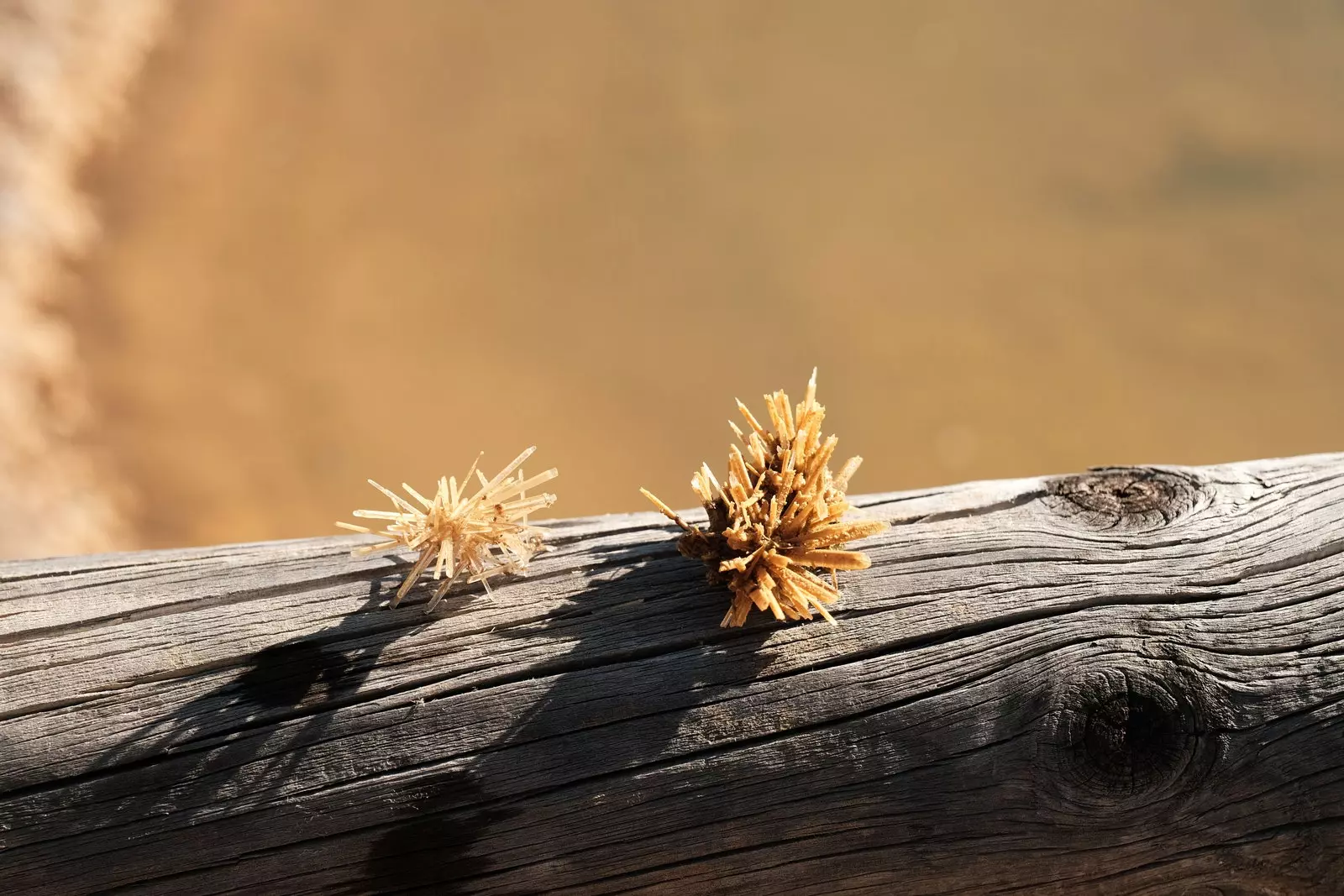
Iptuci salt is present in the Berasategui and Ángel León restaurants.
SUMMER IS A PARTY
But the summer season is not only harvest season, it is also the part of the year in which José Antonio takes the opportunity to organize very special evening events . Dinners with live music for which he distributes up to 3,000 torches throughout the salt flats that illuminate the place.
However, it is not the only project in which he is immersed: since he took over the business after inheriting it from his father, his mind has not stopped creating. to invent To set all kinds of goals. Among them, the salt tastings which he regularly organizes to provide customers with more gastronomic knowledge associated with his product. Tastings that are accompanied by the elaboration and tasting of a recipe —José Antonio has a fairly important past linked to cooking—, and that are sometimes even paired with local wines.
and although toast with a good native broth could be the ideal end to this immersion in the saline universe, it would not hurt to do it another way: by stocking up on the product of 10 to take home. Next to the salt flats, in a small and simple shed, José Antonio dispatches his product right and left, both the basic one and the one seasoned with all kinds of seasonings —be it curry, turmeric or pink pepper— to anyone who wants to take home a little home.
A simple way to revolutionize the culinary spirit at the user level. Does anyone dare to put it into practice?
See articles:
- Banished crop: the Cadiz project that has revolutionized agriculture through design and sustainability
- A community garden (and lots of surfing) to change the world from El Palmar
- An excuse full of art and design to return to Vejer de la Frontera
